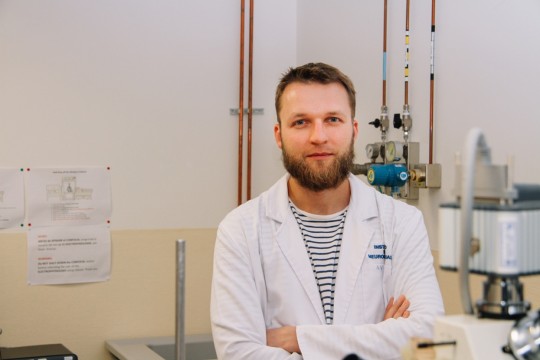Embryonic thalamic Ca2+ waves: a sub-cortical mechanism that triggers cross-modal reorganization of cortical areas in mice
Sensory systems perform a striking adaptive ability of cross modal plasticity, whereby the loss of one sensory modality induces cortical reorganization that leads to enhanced sensory performance in the remaining ones. Classically this compensation was attributed mainly to an increased sensory experience through the spared modalities. However recent studies demonstrated that the process of cross modal plasticity might be triggered even before the arrival of sensory information. For example, it was shown that in mice enucleated at P0, barrel formation was disrupted before active whiskering starts. These new data suggested the existence of a mechanism, which would enable sensory systems to communicate among them before they start receiving the information from the external world; however its nature remains implicit. Meanwhile, during this critical period of sensory systems development, correlated spontaneous activity is propagating from the peripheral to the central stations within the same modality and is believed to play significant role in sculpting and refining of sensory maps and circuits. Altering the pattern of this activity leads to the disruption of cortical refinement, positioning it as a likely mechanism that might be also involved in the cross modal cortical reorganization. The putative scenario where the activity-mediated intercommunication among sensory systems could take place is the thalamus – the brain structure where peripheral sensory inputs from visual, auditory and somatosensory systems converge before reaching the cortex.
Here we demonstrate the existence of an intrinsic correlated spontaneous activity in the form of Ca2+ waves confined within the principal sensory nuclei of the thalamus, emerging at E14.5, before the arrival of peripheral innervation. These gap junction mediated waves spread over the borders among the sensory nuclei thus linking visual, auditory and somatosensory systems, and then propagate to the cortex through thalamo-cortical axons. Disruption of Ca2+ waves in auditory nucleus, as well as embryonic binocular enucleation, triggers changes in the pattern of the waves in the somatosensory thalamic nucleus (VPM) followed then by alteration in the barrel cortex organization. At the molecular level, calcium waves were shown to regulate the nuclear orphan receptor Rorb in the VPM, which increases the complexity of thalamo-cortical terminals.
To summarize, our findings reveal a new mode of communication between distinct sensory-modality thalamic nuclei, whereby spontaneous calcium waves trigger cortical size adaptations prior to the onset of sensory information processing.
Instituto de Neurociencias
Laboratory of Cellular and Molecular Mechanisms of Brain Wiring
(Dr. G. López-Bendito)
UMH-CSIC, Av. Ramón y Cajal, s/n
Campus de San Juan
03550 San Juan de Alicante
Alicante (Spain)
Invité par J. EPSZTEIN & C. HAMMOND
Salle de conférence INMED, mercredi 7 juin 2017 à 11h

